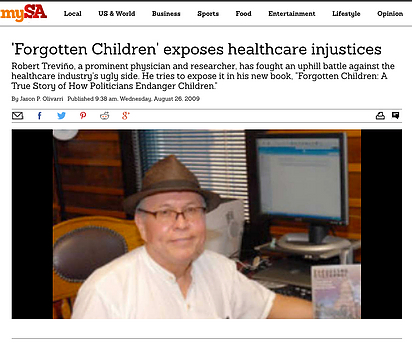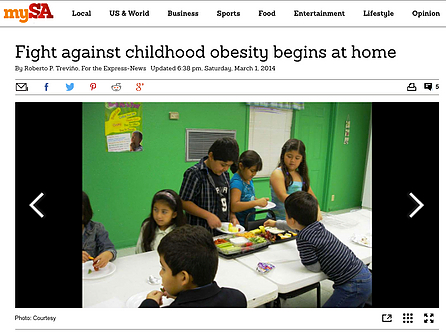About The Social and Health Research Center (SAHRC)
Mission
The Social & Health Research Center is committed to improving the social and health well-being of populations at-risk.
Vision
The Social and Health Research Center expects to improve health behaviors with innovative and evidence-based health programs to control chronic disease such as obesity, hypertension, and type 2 diabetes and to design better instruments to evaluate program effectiveness.
History
The Social and Health Research Center (SAHRC) was founded in 1991 by Dr. Roberto P. Treviño, a San Antonio physician interested in early age health interventions. To address the rising rates of childhood obesity, youth-onset type 2 diabetes, and cardiovascular disease occurring in children, the SAHRC incorporated as a nonprofit organization in 1995 with 501 (c) (3) status focusing on populations at risk.
Bienestar/NEEMA
In 1997, the SAHRC in collaboration with medical doctors, university professors, teachers, and parents developed Bienestar/NEEMA, a bilingual coordinated school health program (CSHP) comprising of four components that most influence children’s health: Health Class (health literacy), P.E. (physical activity), Cafeteria (Child Nutrition Services), and Home (Family Engagement).
Evolution:
"Bienestar/NEEMA's current curriculum evolved from a textbook based school health program that was bilingual, and culturally appropriate to meet the needs of South Texas students to what has now become a dynamic interactive online health program filled with identifiable characters delivering health concepts through animated stories."
Published Scientific Research
In 1997, to better understand the effectiveness of Bienestar/NEEMA within the school population, the SAHRC entered a phase of program evaluation and piloted a randomized controlled study in San Antonio Independent School District (SAISD). The study produced remarkable results showing intervention students decreased blood glucose and insulin levels, decreased obesity rates and dietary fat intake, and increased dietary fiber intake and fitness levels. The success of the program to make a positive health change in students led other school districts in Texas to adopt the program as part of their wellness policy. In 2004, the Texas Education Agency designated Bienestar/NEEMA as an approved coordinated school health program. The success in two subsequent studies funded by the National Institutes of Health, NIDDK has shown the health program to be an effective and sustainable health intervention to control chronic disease in youth.
Arch Pediat Adolsec Med. 2004;15:911-917
Science and Technology for the 21st Century
The SAHRC continues to innovate Bienestar/NEEMA by integrating modern technology to improve student engagement, and scientific data capture for program evaluation. Fully animated health stories and interactive lesson activities are new features to the program that establishes Bienestar/NEEMA’s digital footprint as a powerful tool in the school-based curriculum environment.
Adults can benefit too!
Soon after establishing Bienestar/NEEMA CSHP, the SAHRC developed the BieneStar Adult Healthy Lifestyle Program (BAHLP) an Intensive Behavior Therapy to prevent type 2 diabetes and cardiovascular disease.
The Future
The SAHRC future is bright with the Center growing in both size and in stature as it continues to innovate and deliver new evidence-based health programs. For the foreseeable future, increasing reliance on chronic disease, and mental health prevention programming, like those designed by the SAHRC, will be needed to address the rising rates of childhood obesity. Expanding Bienestar/NEEMA’s online bilingual CSHP to other regions of the US and Mexico is a focus allowing more schools an affordable health solution to a global crisis.
A Cautionary Tale: The Covid 19 pandemic forced the world to quickly adapt to online learning and working. Scientists believe this is not the last of Epidemiological events that we will face. SAHRC aims to continue to learn and adapt to the educational, psychological, and sociological challenges brought forth by the COVID-19 Pandemic.
Get To Know Dr. Treviño
Scroll through to watch the video and read articles in which SAHRC founder and executive director, Dr. Roberto P. Treviño, has been featured.
Need more details? Contact us
We are here to assist. Contact us by phone, email, or via our social media channels.











